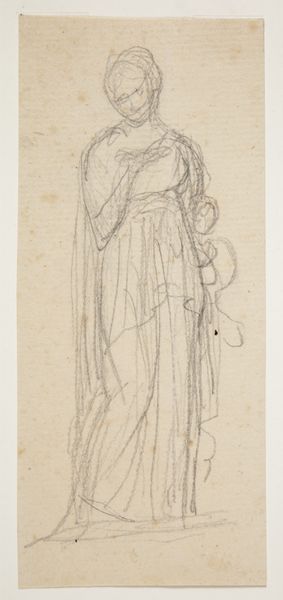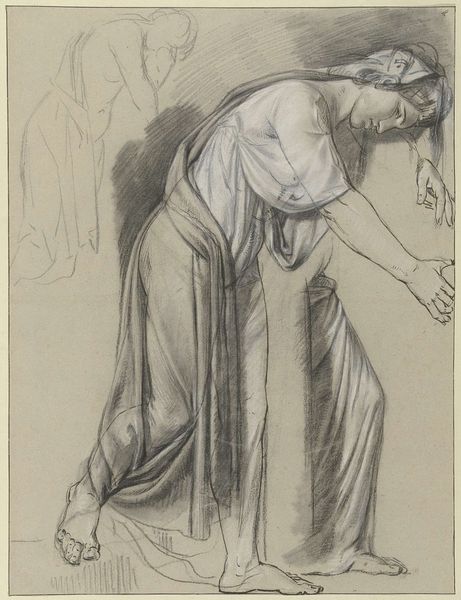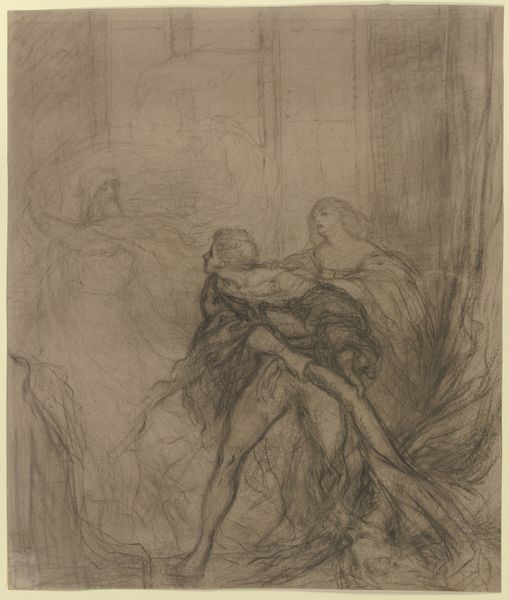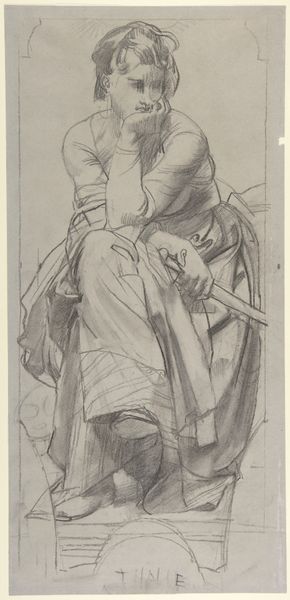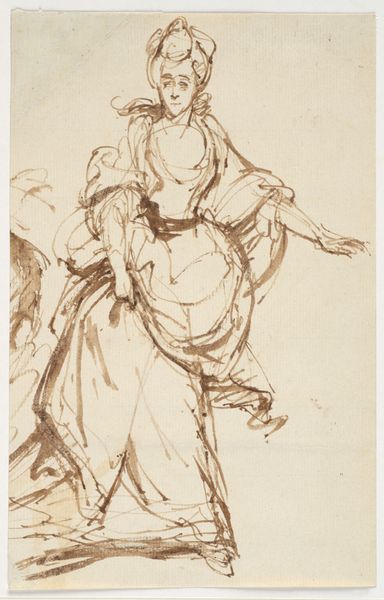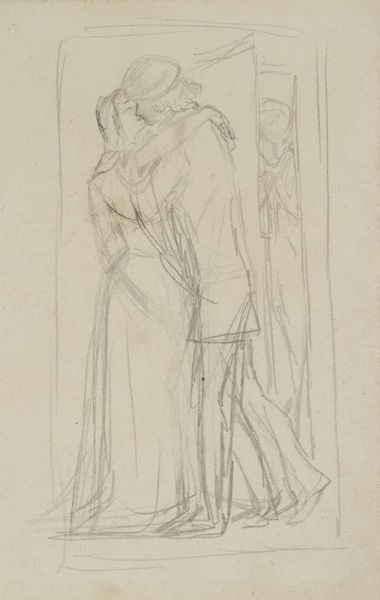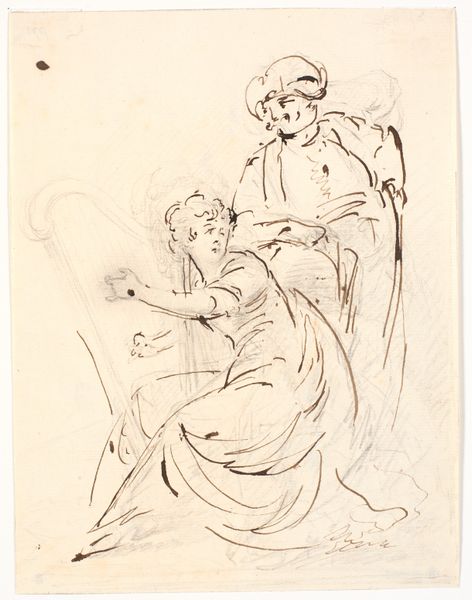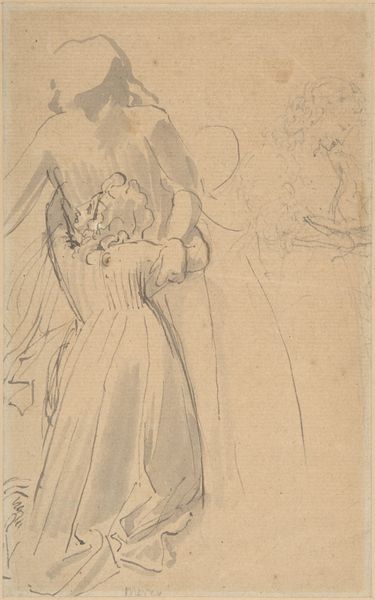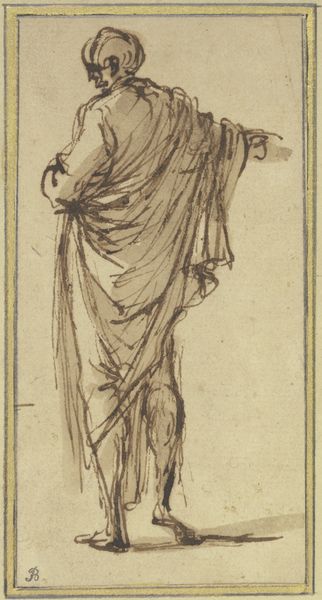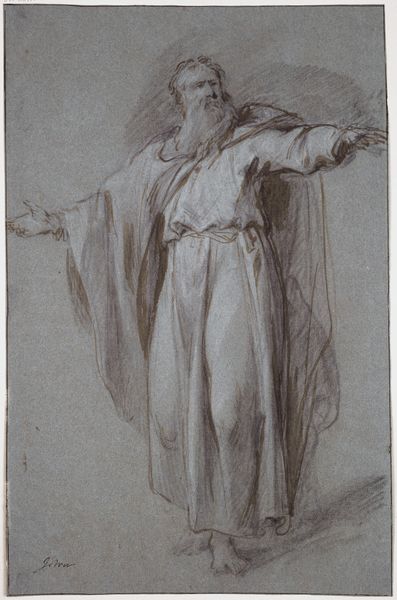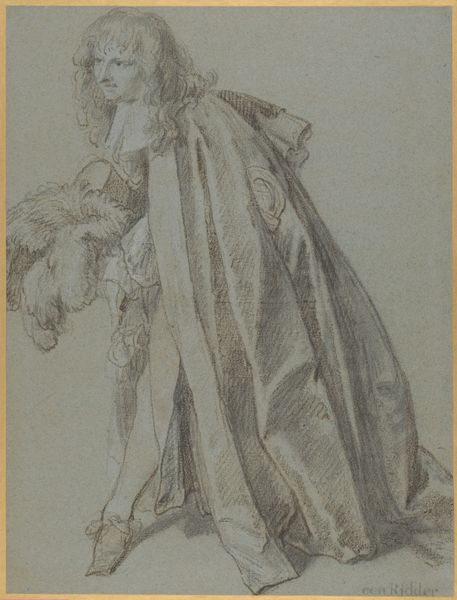
Copyright: Public Domain
Editor: This drawing, "Charles and Amalie" by Victor Müller, created around 1859 using pencil, chalk and ink on paper, feels incredibly dramatic. The figures are so entwined. How do you interpret this work, especially considering the historical context? Curator: It’s tempting to see it as a purely Romantic depiction of love, right? But, what does it mean to represent such intimate scenes in a time of intense political and social upheaval? This era witnessed a struggle for individual rights and national identity. Could this embrace be a metaphor for a desired unification, a yearning for wholeness amidst division? Editor: I hadn't thought of it that way. The sword seems to point to division instead? Curator: Precisely! That sword introduces a compelling tension. Is it a symbol of masculine power protecting Amalie, or a stark reminder of the patriarchal structures limiting her agency, literally hanging by his side? How does Amalie's posture, tilted back and seemingly vulnerable, play into the gender dynamics of the time? Editor: I see what you mean. It’s more complex than just a loving embrace. It also speaks of power. Curator: It absolutely does. We should question the idealization of love. The pre-Raphaelite brotherhood often looked back to earlier history and romance. This artwork shows its time period as well as older influences. What would you say? Editor: Now I see it as a lens to question gendered power dynamics inherent in these kinds of romantic portrayals, not to take them at face value. Curator: And perhaps even reflect on how these dynamics still resonate in contemporary society, influencing how we perceive relationships and gender roles today. Editor: Exactly! Thank you, seeing the art in this drawing through this perspective opened my mind.
Comments
No comments
Be the first to comment and join the conversation on the ultimate creative platform.


